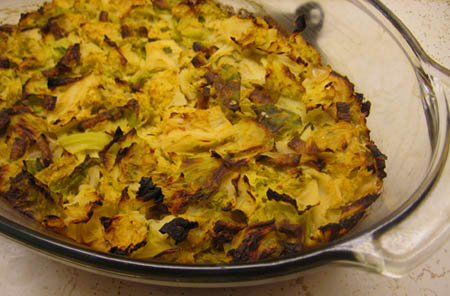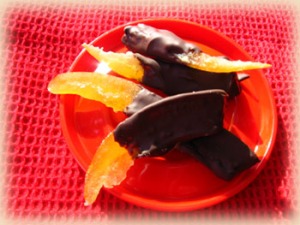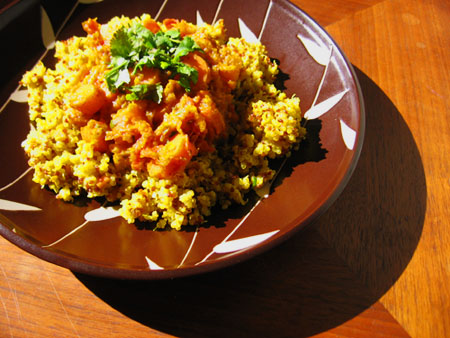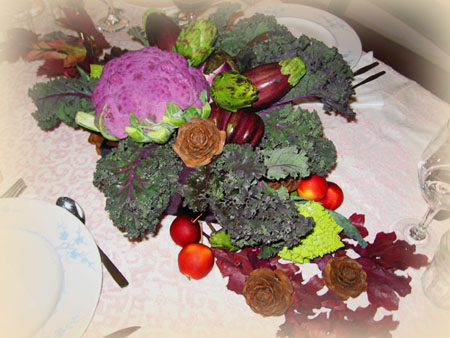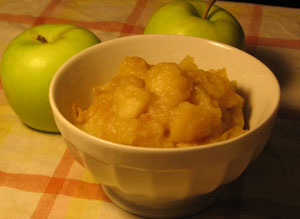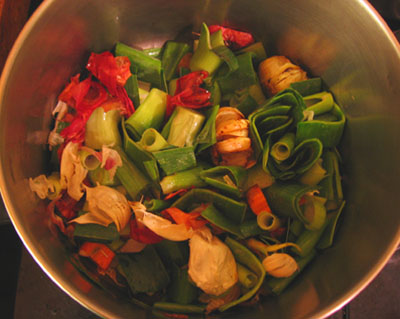
How freaking good does that look?
I have so many recipes for gluten-free pizza crust bookmarked. But the truth is that since even before I stopped eating wheat, I’ve always balked at any recipe containing the words “yeast,” “knead,” or “allow to rise.” I’m not a bread baker. I’m a cake queen, a mistress of vegetables, a goddess of savory dishes from all corners of the globe. I’ve conquered my fear of homemade beans and my pressure cooker paranoia. I’ve learned to ferment my own sauerkraut and kimchi. I’ve even finally managed to remember to defrost the darn stock/beans/etc. ahead of time, at least most of the time. But I’m simply not that interested in learning to make yeast breads.
The thing I miss about pizza is the convenience. It’s a magical meal where every part of the meal – starch, veggie, and protein – is stacked neatly together. For a few dollars you can get a slice of this efficient deliciousness just about any time of day or night. It’s tasty as heck, but if I’m going to put in hours of work it’s not going to be for pizza.
Well, today I made my first socca pizza for lunch. The whole meal took maybe 30 minutes, tops (which for me is practically an Olympic record), and, unlike some previous weird attempts I’ve made at gluten-free pizza, this actually recreated the experience of pizza. Savory, flavor-packed crust, crisp at the edges and chewy in the middle. Tomato sauce, veggies, and creamy cheese, piled onto a slice that actually survives being lifted and bitten into without flopping down and spilling its toppings hither and yon.

Socca pizza is similar to the socca de Nice I’ve made in the past. But instead of using chickpea flour to make crepes on the stove, you bake your chickpea batter in a skillet in a very hot oven. Then you top it with yummy things, run it under the broiler, and pretend you didn’t notice how the recipe said “serves 2 to 3” so you can, with a clear conscience, devour the entire thing.
I topped my pizza with marinara sauce from a jar, a sauté of dino kale, red onion, and garlic, and dollops of vegan cream cheese. I left the sauce off of a section of the pizza, and I couldn’t decide which style I preferred. I’d take a bite of one and say to myself, “Oh God, this is the one, no sauce, so crispy and delicious.” And then I’d take a bite of the marinara side and go, “PIZZA! YUM!” and it just went on like that back and forth until the whole thing was gone.
I’m so excited to have pizza back in my life again. And seriously, making socca pizza is almost as easy as heating up a frozen pizza, only it’s five times cheaper and a billion times more delicious. I’m already thinking about which toppings I’ll use tomorrow…
Socca Pizza with Kale and Red Onions
This dish was inspired by a post from Celiacs in the House, and adapted from recipes from the blogs A Mingling of Tastes and Simply Sugar & Gluten Free, and The Allergen-Free Baker’s Handbook by Cybele Pascal.
Serves 1-2, as a main dish.
For socca crust:
1 T. olive oil + 1 T. olive oil
1 C. cold water
1 C. chickpea flour (also called besan at Indian markets; Garfava flour works, too)
1 t. kosher salt
1/2 t. ground cumin
1/2 t. dried rosemary
1/2 t. dried oregano
For toppings:
1/2 jar marinara sauce (optional)
2 t. olive oil
1/4 red onion, thinly sliced
1 clove garlic, thinly sliced
5 leaves kale, washed, stems removed, and sliced
Vegan cream cheese (optional)
High quality olive oil & sea salt if you are opting not to use marinara sauce
Put a 12-inch cast iron skillet (10-inch is fine, too, the crust will just be a bit thicker and chewier) into your oven and preheat oven and skillet to 450 F.
In a blender, combine water, chickpea flour, 1 T. olive oil, salt, cumin, rosemary, and oregano. Blend until smooth, scraping sides of blender if necessary. Refrigerate batter until oven has preheated.
Remove cast iron skillet from oven. (Careful! It’s very hot!) Put 1 T. olive oil into pan and swirl carefully to coat the bottom and about 1/2 inch up the sides. Return oiled skillet to the oven for a few minutes until oil is hot and shimmering.
Remove skillet from oven, pour batter into skillet and place back into oven and cook for 15 – 20 minutes, or until center is set and edges are browned and pull away slightly from the pan.
Turn on broiler. Leaving the socca crust in the pan, spread on a layer of tomato sauce (some like it thick, some like it thin). If you are not using marinara sauce, drizzle some good quality olive oil and sprinkle some nice sea salt. Or skip both – it will still be delicious, I promise! Spread kale topping (see below) evenly across the pizza. Dot with knobs of vegan cream cheese, if using. Place pan under broiler until cream cheese is very lightly browned, being careful not to let the kale burn, about 3 minutes.
Remove pan from broiler and let pizza rest for 5 minutes. A steady hand and a spatula will easily slide the pizza from the pan onto a waiting surface, where you can cut it into slices and devour.
To make topping: Heat olive oil in a pot or pan and sauté red onion until it begins to brown. Add in garlic and sauté until it begins to brown. Add kale and saute until it reaches your desired texture (some like it al dente, some like it meltingly tender).







